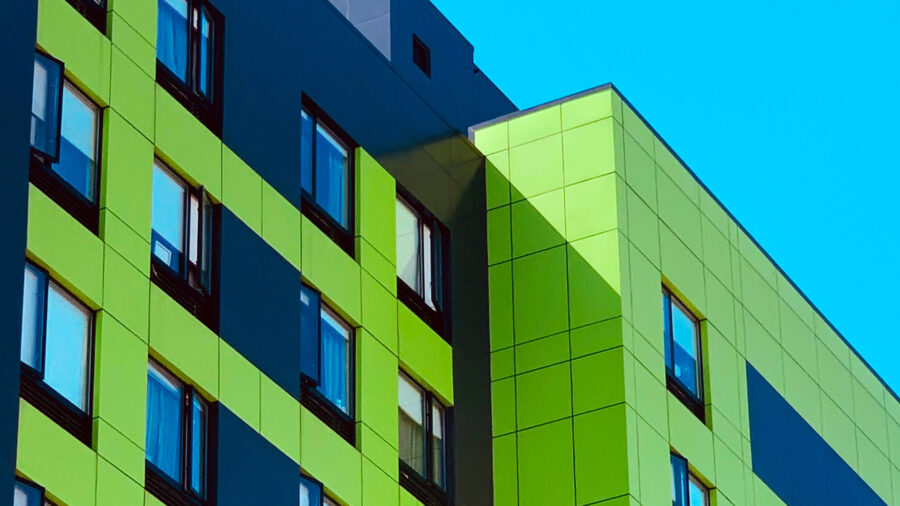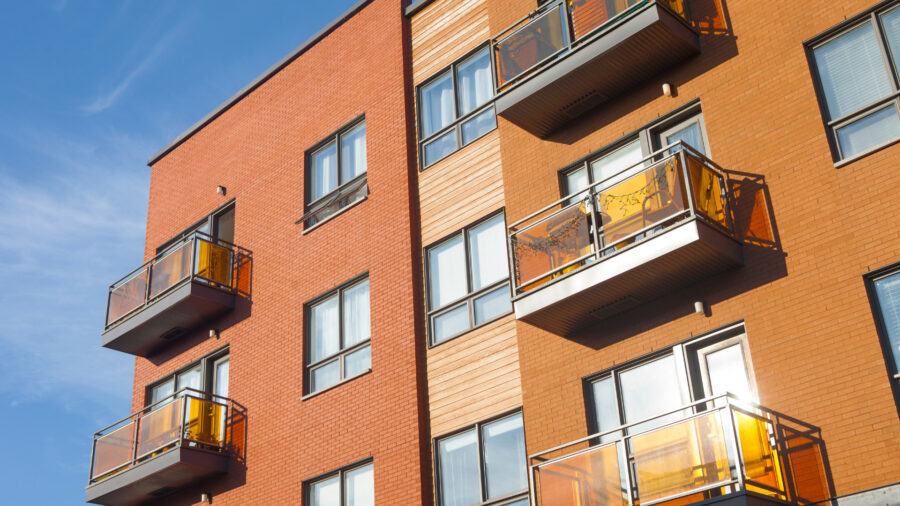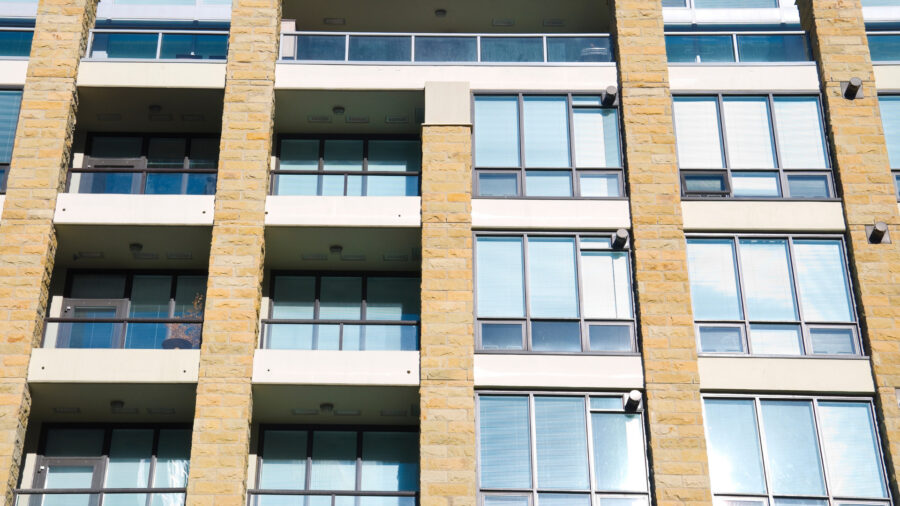You have successfully completed all the lessons in this course. Please verify your identity by entering in your State Recognized ID number or your full name to take the final exam.
Lesson Tag: FIN122TX-CLE
Identity Verification
You have successfully completed all the lessons in this course. Please verify your identity by entering in your State Recognized ID number or your full name to take the final exam.
Identity Verification
You have successfully completed all the lessons in this course. Please verify your identity by entering in your State Recognized ID number or your full name to take the final exam.
Identity Verification Copy Copy
You have successfully completed all the lessons in this course. Please verify your identity by entering in your State Recognized ID number or your full name to take the final exam.
Identity Verification Copy
You have successfully completed all the lessons in this course. Please verify your identity by entering in your State Recognized ID number or your full name to take the final exam.
Identity Verification
You have successfully completed all the lessons in this course. Please verify your identity by entering in your State Recognized ID number or your full name to take the final exam.
Identity Verification
You have successfully completed all the lessons in this course. Please verify your identity by entering in your State Recognized ID number or your full name to take the final exam.
Identity Verification
You have successfully completed all the lessons in this course. Please verify your identity by entering in your State Recognized ID number or your full name to take the final exam.
Identity Verification
You have successfully completed all the lessons in this course. Please verify your identity by entering in your State Recognized ID number or your full name to take the final exam.
Identity Verification
You have successfully completed all the lessons in this course. Please verify your identity by entering in your State Recognized ID number or your full name to take the final exam.
Identity Verification Live – IDECC
You have successfully completed all the lessons in this course. Please verify your identity by entering in your State Recognized ID number to take the final exam.
Identity Verification Live – MF321DC-BR
You have successfully completed all the lessons in this course. Please verify your identity by entering in your State Recognized ID number to take the final exam.
Identity Verification Live
You have successfully completed all the lessons in this course. Please verify your identity by entering in your State Recognized ID number to take the final exam.
Identity Verification Live
You have successfully completed all the lessons in this course. Please verify your identity by entering in your State Recognized ID number to take the final exam.
Opportunity Zone and Local Incentives: Q&A with Walker & Dunlop’s Robert Quarton
Overview
A Q&A with Robert Quarton, Walker & Dunlop Inc.’s Vice President, Capital Markets.
Lesson 5 Reading
In the last lesson, we explored how the federally-driven Opportunity Zone program is being paired with municipal, county and state incentives. To shed additional light on this topic, we chatted with Robert Quarton, Walker & Dunlop Inc.’s Vice President, Capital Markets, to delve further into the pairing of O-Zone and other incentives.

Q. How do multiple designations help an area that is already designated as an Opportunity Zone?
A. From a federal tax perspective, the local city designations do not enhance the federal Opportunity Zone tax benefits. However, you can stack other federal tax benefits (historic tax credits, new market tax credits, affordable tax credits, etc.) with the Opportunity Zone tax benefits. There is also the potential to take advantage of any state-level tax incentives on top of the federal tax benefits. Each state has to designate whether they will comply with the Opportunity Zone tax benefits on state tax law. So far, some have conformed with the federal law, while others have made changes, and the remainder have not finalized the tax treatment. With all of this variance, a developer or investor should consult a reputable tax attorney or CPA to discuss the specific tax structure for each development.
Q. Is there a potential for confusion from developers/investors when it comes to designations?
A. Yes, there could be tax confusion around these designations. Opportunity Zones are federal law and should be evaluated from a separate perspective. Again, a developer or investor should consult a reputable tax attorney or CPA to discuss the individual tax structure for each development.
Q. Will we be seeing more of these types of designations, especially in OZs, moving forward?
A. It’s possible. Opportunity Zones were enacted to improve communities by creating financial benefits for investors willing to put money into these zones. Developers, equity funds and government entities are using this legislation to benefit financially from projects, and to generate buzz and attention around investing in these communities. Due to these motivations, you could see a number of local and state municipalities create these designations to drive interest and investment in their local areas to attract investors looking to make a positive social impact.
Key Points
- Federal Opportunity Zone tax benefits
- Historic tax credits
- New market tax credits
- Affordable tax credits
Pairing Opportunity Zones with Other Incentives
Overview
An overview of how opportunity zone projects across the nation have employed various tax incentives.
Lesson 4 Reading
In 2002, the United States Air Force shuttered the Brooks Air Force Base in the southern part of San Antonio. Rather than falling into obscurity, the 1,300-acre former base became the mixed-use Brooks City Base, later rebranded as just Brooks. Furthermore, Brooks was designated as an Opportunity Zone in 2018.

Brooks has attracted three other additional designations — it is a Tax Increment Reinvestment Zone (TIRZ), a Smart San Antonio Innovation Zone, and a San Antonio Tomorrow Regional Center. Leo Gomez, president and CEO of the Brooks Development Authority, indicated that all four designations were deliberately sought, and resulted in a “development toolbox” to attract more interest in the project, which is just west of Interstate 37, and north of Interstate/Loop 410.
“We worked at them, we intended for them to overlap on our campus, and this is the result,” Gomez told the Rivard Report. “And that intention has led to multiple tools in the toolbox. We’re not relying on just one or the other.”
Brooks secured the state of Texas’ first Opportunity Zone project in early 2019, when DPR Investments acquired 9.4 acres, on which it will build a self-storage facility and flex space for small businesses. The developer plans to break ground on the project in fall 2019.
The south San Antonio region is not the only one to pair the Opportunity Zone program with other incentives. State and local governments continue adding their own incentives to make themselves — and their O-zones — even more desirable to investors and developers. According to a recent article written by the Pew Charitable Trusts, 17 state legislatures so far have considered proposals to pair tax breaks with Opportunity Zones.
“I’m encouraged that some states have been very thoughtful in seeing opportunity zones as a priority and are thinking through incentives,” Rachel Reilly, director of impact strategy at the Economic Innovation Group told Novogradac. “It’s a federal benefit, but to make it work, you need a creative structure around it at the local level.”
Novogradac pointed out that some of the recently enacted Opportunity Zone legislation includes:
- Louisiana Act 251, which confers Restoration Tax Abatement Program eligibility to Opportunity Zone structures.
- Maryland S.B. 581, which adds Economic, Housing and Community Development Tax Credits to Opportunity Zone enhancement program incentives.
- Arkansas S.B. 196, providing state tax incentives related to Opportunity Zone investments.
Furthermore, local municipalities — such as Erie, PA; Louisville, KY and Oklahoma City — have released investment plans geared toward attracting Opportunity Zone investments. Additionally, an article in Governing Magazine noted that Oklahoma City’s downtown Opportunity Zone also covers its tax increment financing (TIF) district, meaning investors can take advantage of both programs.
While OKC has yet to secure an investment in one of its 117 Opportunity Zones, Mayor David Holt is optimistic, telling Governing that his city is firmly on investors’ maps, and they are considering locales they might not have looked at in the past.
Reilly added that, while there has been a great deal of state-sponsored O-Zone legislation in 2019, it’s still early days when it comes to determining the best approach. “It’s really important for cities and states to identify priority investment areas,” she said. “That is going to determine the best approach for incentives.”
Getting back to Brooks’ efforts, Gomez indicated that the four designations sought were an important part of continuing the region’s development efforts. Noted Gomez: “Our vision is to develop a vibrant mixed-use community that has an international presence and doing it through a mission, through a strategy, that develops that mixed-use community to attract what we call ‘marquee employers.’ These various designations help us leverage the 1,308 acres that used to be the Air Force base.”
Key Points
- Opportunity zone projects
- Tax incentives
- Brooks City Base
Exploring the Connection Between Green and Affordability
Overview
Affordable housing development depends on a limited supply of low-income housing tax credits — LIHTCs — to help finance development.
Lesson 3 Reading
Sustainability. Affordable housing. These terms often overlap when it comes to development and/or renovation of multifamily product, and for good reason. There is a growing need and demand for affordable housing. There is also increased demand for green residences, those that are created through use of sustainable design practices, and result in operational efficiencies.
The question: How do green design features impact the feasibility of developing new affordable rental housing?
The answer: It depends.
Affordable housing development depends on a limited supply of low-income housing tax credits — LIHTCs — to help finance development. Green development, meanwhile, is also important, but for different reasons. Eco-friendly housing creates efficiency and protects the environment. However, it is sometimes difficult to quantify green development benefits. As such, equity providers and lenders might not be willing to underwrite all operating efficiencies from a green development to generate greater loan proceeds.
While all stakeholders would prefer to see sustainable design features in new development, the cost can stress project budgets and could increase the number of LIHTCs necessary to produce affordable housing. At the risk of oversimplifying, this has resulted in a trade-off, of sorts, between the amount of affordable housing produced each year and the level — and cost — of green design features.
“Even with case studies noting that green, affordable housing can eventually save money, the upfront costs can place project budgets under stress and create bad optics for those concerned about the cost of affordable housing production,” said Todd Crow, executive vice president and head of the Tax Credit Solutions segment of PNC Real Estate.
Affordable housing is designed to serve a renter pool spending less than 30% of its after-tax income on housing.The townhome development in your neighborhood, in which residents earn up to 60% of the area median income, is affordable housing, as is the urban core residential high-rise offering half of its units below market rate.

In its 2018 “The State of the Nation’s Housing,” the Joint Center for Housing Studies of Harvard University said that demand for affordable housing continues to outstrip the available supply. The report noted, “The nation’s supply of low-cost rental housing shrank significantly after the Great Recession and has remained essentially unchanged since 2015.”
There is little doubt that demand for affordable housing has reached a crisis point in some parts of the country. Higher upfront expenses involved with green development can mean fewer units.
When it comes to green development, “developers struggle with sustainability issues, as they attempt to apply a ‘one-size-fits-all’ approach to green activities,” Crow said. “‘Sustainability’ can run the gamut, from natural-gas vehicles to transport construction materials, to use of environmentally-friendly paint on houses, to a focus on reducing consumption of water and energy.”
In an attempt to narrow the category, GSA lenders Fannie Mae and Freddie Mac provide loans reliant on green practices. The Freddie Mac Multifamily Green Advantage® program offers loans rewarding investors and developers that take steps to reduce energy and water consumption. Fannie Mae’s Green Financing Business is also geared toward energy and water improvements, as long as they are part of a renovation or development of affordable rental housing.

And, there is proof of eventual cost savings involving green programs. The Environmental Protection Agency said that implementing energy-efficient programs across affordable housing types can result in energy savings of anywhere between 15%-30%. Furthermore, a 2012 study by CNT Energy and the American Council for an Energy-Efficient Economy said that
building owners and residents could save $3.4 billion per year by making energy-efficient upgrades in existing multifamily housing.
If this is the case, then why isn’t there more affordable housing, especially housing that is energy-efficient and sustainable?
One reason is that, as noted above, higher upfront costs and the need for higher LIHTCs can be problematic for construction budgets. Eco-friendly roofing and frame materials are frequently more expensive than other materials. Renewable technologies, such as solar panels, programmable HVAC systems and water reclamation systems, are costlier. A higher per-unit cost for sustainable development could result in fewer units delivered.
To summarize, the connection between eco-friendly development and affordability is complex, partly because sustainability is such a broad concept. Additionally, higher up-front development costs can sometimes mean fewer units, even if green design features eventually lead to lower expenses and future savings. The challenge of merging the proper balance, between meeting the urgent need for affordable housing and desirability of sustainable design, must be a priority for owners and operators alike.
Key Points
- Affordable housing
- Low-income housing tax credits
- After-tax income
- Green and energy-efficient
HUD Remains Consistent Source of Affordable and Market-Rate Multifamily Financing
Overview
Today’s pipeline of HUD transactions is growing, delivering multifamily property investors viable financing solutions as we continue to weather these challenging economic times due to COVID-19.
Lesson 2 Reading

During times of economic upheaval in the U.S., HUD has been a consistent source of financing for multifamily borrowers looking to buy, refinance, renovate or develop affordable and market-rate multifamily properties. Throughout this global pandemic, as during the 2008-20010 economic recession,
HUD’s mortgage insurance programs offer new construction, acquisition and refinance debt, filling the gap left by other capital providers that have curbed their commercial real estate lending programs.
Today’s pipeline of HUD transactions is growing, delivering multifamily property investors viable financing solutions as we continue to weather these challenging economic times due to COVID-19.
Descriptions of the active multifamily property HUD programs are outlined below.
HUD 223(f) For Acquisition or Refinance
Parameters of the HUD 223(f) non-recourse fixed-rate financing for the acquisition or refinance of multifamily properties include the ability to refinance newly constructed properties. The loan term is fully amortizing for up to 35 years and offers no refinance risk, balloon payment or exit test. The loan allows up to about $40,500 per unit in repairs (depending on location). The loan amount is determined by a 1.176 DSCR or 85 percent loan-to-value (LTV), or higher proceeds for affordable deals. For cash out transactions, the LTV is 80%.
HUD 221(d)(4) for New Construction/Substantial Rehabilitation
HUD is looking at new construction loans through its HUD 221(d)(4) non-recourse financing for new construction and substantial rehabilitation of affordable and market-rate multifamily properties program. Under this program, the loan term is fully amortizing for up to 40 years. HUD 221(d)(4) features 85 percent LTV for market-rate properties and up to 90% LTV for affordable properties with highly competitive interest rates. The new construction program provides a construction loan and permanent financing in one loan.
HUD 223(A)(7) For Refinance of Federal Housing Administration (FHA) Loans
With historically low interest rates in markets today, the HUD 223(A)(7) program offers borrowers a great vehicle for refinancing multifamily properties with FHA-issued loans. This streamlined refinance program does not allow equity take-out. Benefits of the non-recourse, fixed-rate loan include no appraisal, no environmental assessment, minimal mortgage credit analysis and a reduced application fee. An additional 12 years can be added to the original loan term if approved by HUD. The financing features prepayment terms typically locked for zero to two years with declining penalties through year 10 and no penalty after 10 years.
Some Mitigating Constraints to Offset Market Risk
As of April 10, HUD has added some mitigating constraints for market-rate and affordable transactions to offset additional risk in the real estate market.
For market-rate transactions, HUD now requires a nine-month debt service escrow. The escrow will be held until the project achieves three consecutive months of debt service coverage.
For affordable transactions, projects with new Low-Income Housing Tax Credits, HUD will review the investor lease-up and operating deficit reserve requirements for adequacy and availability to the borrower. For refinance projects with existing credits, HUD requires a 12-month reserve escrow that may be modified by a stress test. Projects with greater than 90% Section 8 Project Based Rental Assistance will not be required to post a debt service reserve escrow.
All of the above HUD permanent loan programs offer excellent sources of capital at low interest rates.
Key Points
- HUD transactions
- Multifamily Property Investors
- COVID-19
- HUD Permanent Loan Programs
Low Income Housing Tax Credits: Five Things CRE Investors Need to Know
Overview
LIHTC is a federal tax credit created through the Tax Reform Act of 1986. It was designed to encourage private equity investment in affordable and public housing by commercial real estate stakeholders.
Lesson 1 Reading
The Low-Income Housing Tax Credit (LIHTC), a federal tax credit created through the Tax Reform Act of 1986, was designed to encourage private equity investment in affordable and public housing by commercial real estate stakeholders. LIHTC has become the longest-running national affordable rental housing incentive program in history,

as well as the most important resource for CRE professionals to create and preserve affordable housing in the United States. The 30+ year program has resulted in more than 45,000 projects, representing the creation of over three million units of affordable housing.
The LIHTC program, which is administered by the IRS, provides tax incentives in exchange for capital for development and/or financing costs to encourage developers to create and preserve affordable housing, including new construction, acquisition, or rehabilitation of existing properties. These tax credits are proportionally set aside for each state based on population and are distributed to the state’s designated tax credit allocating agency. These state agencies then distribute the tax credits based on the state’s affordable housing needs and Federal and State-specific program requirements. This is known as the Qualified Allocation Plan (QAP) process.
LIHTC investments are an attractive option for portfolio diversification and to take advantage of continued opportunities in the multi-family sector. However, CRE stakeholders should be aware of these five issues affecting LIHTC deals before moving forward.
1. There is a complex capital stack
Typical LIHTC deals involve many agencies and/or sources of funding, all of whom may have different reporting standards and requirements. Currently, key funds for LIHTC investments come from the Department of Housing and Urban Development’s HOME Investment Partnership Program, Community Development Block Grant, Affordable Housing Program, and the National Housing Trust, among others. There are two types of equity tax credits for LIHTC investments: 4% and 9% Bond Tax Credits, awarded through state-specific QAPs. These QAPs set requirements, application deadlines, and the affordability period for a deal structure. Hard debt is funded through a conventional mortgage, while soft debt comes from a government source. The average LIHTC deal is approximately 45% equity, consisting of roughly 24% hard debt and 21% soft debt.
2. Compliance standards vary state to state
In addition to the complex capital stack structure, LIHTC deals can have enormous state by state differences. This can come in the form of specific due diligence requirements, what type of consultant is qualified to assess projects, and how compliance requirements are reported. Some states require a certified architect or engineer to do all Capital Needs Assessments. In other states, accessibility compliance is required above and beyond typical debt reporting standards. Some states differ in their documentation requirements, and how reports are delivered (with some requiring their own template format). Finally, application deadlines differ from state to state, and if you miss that window, you must start the process again in the following year, which may require additional paperwork or assessments.
3. Due diligence and risk management requirements may be extensive
Because there are so many stakeholders and sources in the capital stack structure of a LIHTC deal, there has been a trend towards more due diligence and risk management oversight to ensure that federal and state regulations are met, and proper use of funds is planned. Required services may include environmental compliance, a review of structural/building code standards and conformance, accessibility standards review, and green/energy efficiency compliance for multifamily housing.
4. Pick a knowledgeable consultant to guide you
Executing a successful LIHTC deal can hinge on choosing a knowledgeable, experienced consultant who can help you navigate the intricacies of reporting standards, who understands state-specific requirements and meeting hard deadlines, and who can guide you through the meticulous underwriting and due diligence assessment process. A good consultant will be able to evaluate a potential property’s environmental, physical and accessibility needs and help you decide whether the deal is worth your bottom line. Finally, your consultant should be able to assist you with projects that are already at various stages in the 15-30-year LIHTC cycle, and provide support whether you are a project sponsor, investor, or a lender. Your multi-disciplinary team should ideally possess technical skills, staff resources and portfolio experience to navigate the requirements of a LIHTC deal.
5. Try to know your source of funding early in the process
Underwriting structuring and due diligence risk management for Fannie Mae, Freddie Mac, or HUD financing vary greatly. If an equity investor comes on board later in the deal, they may require a totally different set of reporting standards, especially Property Condition Assessments for existing buildings. Understanding your source(s) of funding as early in the process as possible will help your consultant determine the most efficient and complete requirements to execute your transaction without delays.
If structured correctly, LIHTC can be a profitable investment regardless of the commercial real estate cycle. However, as we near the late stages of the post-recession real estate cycle, when development opportunities may not be as robust as in previous years and many of the 15-year tax credit deals from the past recession are starting to mature, investors may be looking for opportunities to find new projects and investments. For stakeholders new to LIHTC programs, understanding the complexities and strict guidelines is the key to a successful investment.
Key Points
- Tax Reform Act of 1986
- Federal Tax Credit
- National Affordable Rental Housing Incentive Program
- Affordable Housing
Identity Verification
You have successfully completed all the lessons in this course. Please verify your identity by entering in your State Recognized ID number or your full name to take the final exam.